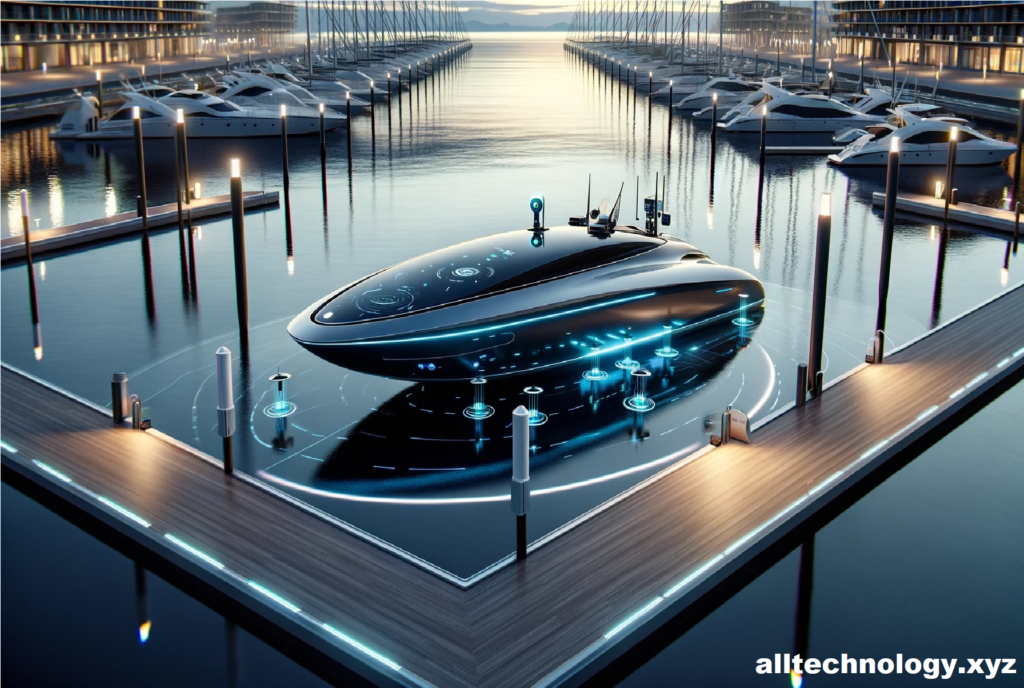Introduction:

In today’s world, technology plays a pivotal role in enhancing safety across various industries, including boating. Modern boat technology has evolved significantly, incorporating advanced systems that not only improve convenience but also ensure the safety of passengers and crew. Whether you’re a seasoned boater or new to sailing, understanding the latest technological advancements can help you stay safe on the water.
In this article, we will explore the key innovations in modern boat technology and how they contribute to enhanced safety.
1. GPS and Navigation Systems
One of the most important technologies that enhance boating safety is the GPS and navigation systems. Modern boats are now equipped with sophisticated GPS devices that provide accurate positioning, allowing captains to plot their course and avoid hazards. These systems offer real-time data on sea conditions, weather patterns, and obstacle detection, making navigation easier and safer.
Benefits:
- Real-time positioning and tracking
- Alerts for shallow waters or underwater obstacles
- Accurate course plotting and rerouting in case of bad weather
2. AIS (Automatic Identification System)
AIS technology is widely used to improve vessel-to-vessel communication and prevent collisions. This system transmits a boat’s location, speed, and course to nearby ships, allowing them to avoid potential collisions by knowing each other’s movements. AIS is especially useful in crowded harbors, shipping lanes, or areas with limited visibility.
Benefits:
- Real-time vessel tracking
- Collision avoidance in crowded areas
- Increased situational awareness for both large and small vessels
3. Marine Radar
Modern marine radar systems have advanced significantly, offering boaters better detection of surrounding vessels, landmasses, and weather conditions. With high-resolution displays, boaters can monitor their surroundings even in low-visibility conditions such as fog, rain, or nighttime.
Benefits:
- Enhanced detection of nearby objects
- Improved navigation in low visibility
- Real-time updates on approaching weather conditions
4. Autopilot Systems
Autopilot systems are becoming increasingly popular among boaters, allowing the vessel to maintain a steady course with minimal manual intervention. While this system offers convenience, it also enhances safety by reducing fatigue during long voyages and maintaining precise navigation in challenging conditions.
Benefits:
- Maintains consistent navigation
- Reduces fatigue for long-distance sailors
- Increases focus on monitoring weather and obstacles
5. Sonar Technology
Sonar systems are essential for understanding what lies beneath the boat. By emitting sound waves and analyzing their return, sonar systems help boaters detect underwater obstructions such as rocks, reefs, or other vessels. This technology is especially useful in shallow waters or unfamiliar territories where underwater hazards may pose a risk.
Benefits:
- Prevents grounding by detecting underwater obstacles
- Useful for fishing and diving operations
- Enhances safety in poorly charted waters
6. Man Overboard Systems
Man overboard systems (MOB) are designed to immediately alert the crew if someone falls into the water. These systems use wearable devices that trigger alarms on the boat if the person wearing the device becomes separated from the vessel. The GPS tracking component helps in quick recovery by pinpointing the exact location of the person in the water.
Benefits:
- Immediate alert when someone falls overboard
- GPS tracking for fast rescue
- Peace of mind for passengers and crew
7. VHF Radio Communication
VHF radios remain one of the most important communication tools for boaters. Modern VHF radios are now equipped with Digital Selective Calling (DSC), which allows the transmission of emergency distress signals at the push of a button. These radios are essential for communicating with other vessels, marinas, and rescue teams in case of an emergency.
Benefits:
- Fast and reliable communication
- Emergency distress signal capabilities
- Essential for coordinating with rescue operations
8. Fire Suppression Systems
Boat fires can escalate quickly, which makes automatic fire suppression systems a crucial safety feature on modern vessels. These systems detect heat and automatically deploy fire extinguishing agents, reducing the risk of a fire spreading and causing extensive damage.
Benefits:
- Automatic detection and suppression of fires
- Minimizes damage and prevents injuries
- Protects critical engine and electrical components
9. FLIR Thermal Imaging Cameras
FLIR thermal imaging cameras allow boaters to see in complete darkness by detecting heat signatures from other vessels, land, and obstacles. This technology enhances safety, particularly during night navigation or in foggy conditions when visibility is poor. These cameras are also useful in search and rescue operations, as they can quickly detect people in the water based on their body heat.
Benefits:
- Improves night vision capabilities
- Enhances safety during search and rescue operations
- Allows for better decision-making in low-visibility conditions
10. Smart Boat Monitoring Systems
Smart boat monitoring systems are the latest in boat safety technology. These systems allow boaters to monitor the condition of the boat remotely through smartphone apps. They provide real-time data on engine performance, fuel levels, bilge pump status, and battery health. If any critical systems fail, the app sends alerts to ensure immediate action is taken.
Benefits:
- Real-time monitoring of vital boat systems
- Remote alerts for potential issues
- Prevents mechanical failures before they become serious
Conclusion: Embracing Modern Boat Technology for Safety
With the rapid development of boat technology, modern vessels are becoming safer than ever before. From GPS navigation to advanced sonar systems and automated safety features, these innovations help prevent accidents and ensure that boaters can enjoy their time on the water with peace of mind. Whether you’re an experienced sailor or a beginner, investing in the latest boat safety technology is essential for ensuring a safe and enjoyable boating experience.

